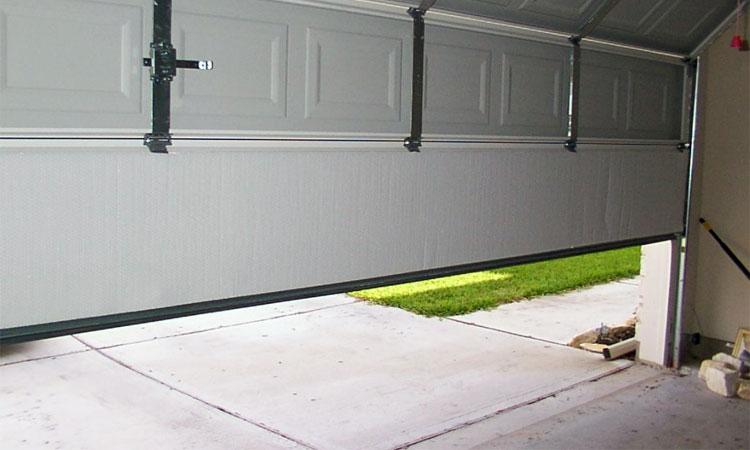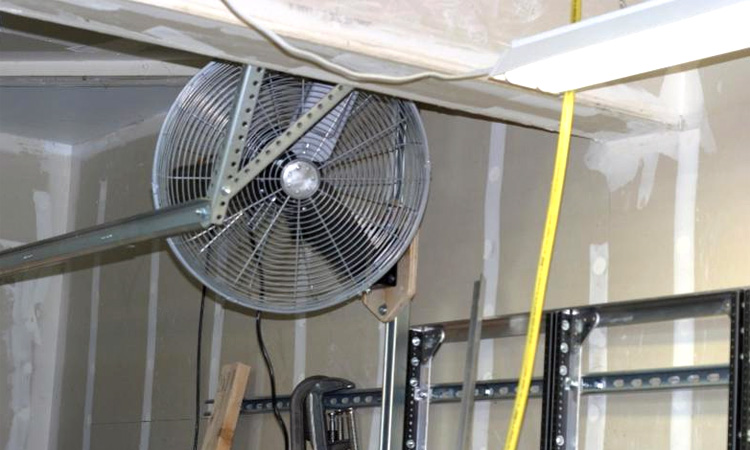13 Reasons Your Garage Door Won’t Close (or Won’t Open)

Back in the day, garage doors were simple panels of wood that lifted up and slid into the ceiling. By comparison, a modern garage door types is a complicated device, relying on several subsystems to properly function.
Some of these sub-assembly systems control the door’s movement, while others are safety features that ensure the door doesn’t cause injury or damage to your vehicle when in motion. This means your garage door won’t close or the door reverses course and goes back up when you are attempting to close it.
The sheer number of things that can go wrong grow with each innovation, while the overall frequency of issues (thankfully) have slowly decreased. Even if your garage door is functioning perfectly, it never hurts to run an occasional diagnostics check to nip potential problems in the bud.
If your garage door won’t close (or the garage door won’t open), it makes sense to run through the examination process below and fix any simple problems along the way before you contact a garage door repair company.
Visual Check
Running a quick visual check of the door is a great way to spot some of the most common problems in minutes.
Problem #1 – The Safety Lock
This is one of the most basic causes of a garage door malfunction. When you press the keypad button for too long, it activates a safety lock and you won’t be able to open the door again with simple keypresses.
To fix, simply hold the button down again for several seconds and try not to bash your head on the wall too hard for locking yourself with such a silly feature.
Problem #2 – Damage to the Door or Track
Your garage door is made up of several panels which run along a track (sometimes called a T-rail or drive guide). If the track becomes misaligned or there’s damage to the door panels, they may not be able to properly slide along the rail.
It may be possible to repair door panels if they are simply dented. Unfortunately, a misaligned track is something that will become worse over time and could lead to serious damage. When faced with this last issue, the best thing to do is call is call in the professionals.
Problem #3 – Misaligned Photo-Eye
The garage door sensor for your door consists of two lenses which sit across from each other near the base of the door track. They must be aligned properly to function, and will sometimes lose their alignment due to being accidentally bumped.
When properly aligned, most photo-eyes will have an LED light that’s on and solid. If mis-aligned, this light will be blinking. Fixing the misalignment is easy in most cases, but if one of the sensor brackets is not attached correctly, an experienced DIYer may be needed to fix it.
Problem #4 – Minor Obstructions
Modern garage doors are designed to stop immediately if the sensor beams meet with any interference. While designed to protect your family and vehicles from getting crushed by the heavy door, they’re not very good at telling when an obstruction is something minor.
Thus, even a cat running past will cause the unit to stop despite the cat being long gone in the millisecond it takes to process the beam breaking.
Solving this problem is simply a matter of locating and removing the obstruction. When the garage door hasn’t been used for a while and you have pest issues, you may find a nest or other pest-related debris blocking the track.
Dust on the sensor (AKA photo-eye) or even a gum wrapper laying on the ground where the door makes contact can cause problems, so be sure to check thoroughly and keep the garage entrance clear of debris.
Problem #5 – Loose Garage Door Cables
With most garage doors, there is a cable on each side that runs from the bottom of the door and up to a drum where it is wrapped around. If the spring shaft above the door becomes mis-adjusted, incorrect tension on the cables is usually the result. This can cause one (or both) of the cables to unspool from the drum, making opening and closing the garage door impossible.
While it’s possible in an emergency to manually spool the cable back onto the drum to allow you to close the door, it’s only a temporary fix and they will simply unspool again next time you open the door.
Best case, the spring shaft’s tension will need to be adjusted. Worst case, the spring shaft will be broken. In both cases, you’ll want to contact a professional to have it fixed since you are dealing with a spring under high tension which can be extremely dangerous.
Power Check
Modern garage doors are operated using electricity, both for the door itself and any remotes. This means there are several potential problems related to inadequate power supplies.
Problem #6 – No Power to the Door
Try the button on the wall-mounted keypad inside your garage for the garage door opener. When this doesn’t work, there’s a good chance it’s not getting any power. Check to make sure the garage door opener is plugged in, the fuse is not blown, and any wires leading to and from the keypad to ensure everything is connected and operational.
Check the voltage, if you have the proper tools, to ensure it’s getting adequate power. Even the best garage door opener won’t do you any good if it or its keypad aren’t getting any power. A button getting the right voltage and functioning properly means the problem lies elsewhere.
Problem #7 – Transmitter Remote or Keypad not Working
When the wall-mounted keypad works perfectly, it’s time to check your transmitter remote. These are battery-powered and may simply need a replacement. If a fresh battery doesn’t help, you may likely need to reprogram the transmitter.
Your garage door opener’s manual will have instructions on how to reprogram your remote. However, when the keypad works and the freshly powered remote doesn’t even after attempting to reprogram, it may be time to get a new remote.
Problem #8 – The Inverter and Motor Battery
Most modern doors use a smaller DC-powered motor. Power coming from your home is converted from AC using an inverter. This power is then partially diverted to a backup battery which allows you to use the door even when the house has no power.
Test the voltage coming from the inverter as well as making sure the backup battery hasn’t died. In the event both are working perfectly, the problem may well be something mechanical and not electrical in nature.
Problem #9 – The Motor Connection
One would think this is something garage door opener manufacturers fixed long ago. The motor has a manual switch for use in power outages that isn’t designed for the clumsy.
It’s easy to accidentally loosen or disconnect the cord running from the switch to the motor, which then prevents the door from functioning at all despite there being nothing wrong with it. Simply check to ensure the cord is properly connected to rule out this possibility.
Mechanical Check
This is probably the worst case scenario for most homeowners. There are several important components in the mechanical portion of your door opener that, when malfunctioning, could prove quite dangerous.
Problem #10 – The Chain or Belt
Depending on your garage door opener type, you may have chain or a belt that is used to pull the door along the guide rails. When these become damaged or snap, the door is useless until the cable is replaced.
This happens most often with belt drives, but can be a problem even in chain drives when moisture causes rust to form on the chain.
Problem #11 – Broken Torsion/Expansion Springs
Perhaps the most dangerous part of your entire door, your system will either use tension or expansion springs combined with cables. The cables function with the springs to help open or close the door. The springs themselves are responsible for carrying the weight of the door and are a crucial component.
A broken spring will result in the cable holding your door in place to unwind from the drum or pulley. When you see any gaps between the spring coils, you need to call a technician immediately.
These components should never be handled by someone not specially trained, as the amount of tension is enough to cause serious injury or even death.
Problem #12 – Stripped Gears
The average garage door is said to be used as often as 1500 times per year. That’s a lot of wear and tear on a system that has to counterbalance something as heavy as a garage door. Over time, the gear on your door opener can become stripped, especially if the gears are plastic.
You’ll know this is the problem by a telltale hum from the opener combined with a complete lack of operation. Unfortunately, it is almost impossible to repair the garage door opener and the only solution for this problem is to replace the opener with a new one.
Problem #13 – Improper Sensitivity or Limit Settings
Many of the settings for your garage door opener can be adjusted, and problems in these settings may cause the door to have issues closing. The sensitivity and limit settings can both be incorrectly set, especially after installing an opener yourself.
Related: 5 Tips for Installing a Garage Door Opener
Fortunately, adjusting these settings is easy to do. Check the owner’s manual from your garage door opener for instructions on how to do so.










